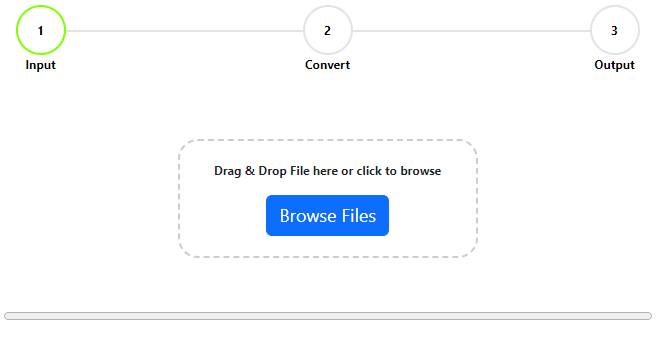4 ways of Converting GeoTIFF to PNG: A Step-by-Step Guide
GeoTIFF is a popular format for storing georeferenced raster images, such as satellite imagery, aerial photography, and even digital elevation models. While GeoTIFFs are great for GIS applications, there might be times when you need to convert them into a more universally recognized format, like PNG, for web use or graphic design purposes. In this guide, we’ll walk you through the process of converting a GeoTIFF to PNG.
1. How to Convert a GeoTIFF to PNG Using GDAL
Prerequisites:
- A GeoTIFF file you want to convert.
- GDAL (Geospatial Data Abstraction Library) installed on your system. GDAL is a powerful open-source tool that allows for manipulation of geospatial data.
Steps:
- Install GDAL (if not already installed):
- For Windows: You can download the OSGeo4W installer and select the GDAL package.
- For macOS: Use Homebrew with the command
brew install gdal. - For Linux: Use your package manager, e.g.,
sudo apt-get install gdal-binfor Debian/Ubuntu.
- Open the Command Line or Terminal:
Navigate to the directory where your GeoTIFF file is located. - Use the
gdal_translatecommand:
Thegdal_translatetool is part of the GDAL suite and is used to convert raster data between different formats.
gdal_translate -of PNG input_file.tif output_file.pngReplace input_file.tif with the name of your GeoTIFF and output_file.png with the desired name for the PNG output.
- Check the Output:
After running the command, you should see a PNG file in the same directory as your GeoTIFF. Open it with any image viewer to ensure the conversion was successful.
Optional: Retaining Georeferencing Information
While PNGs don’t inherently support georeferencing like GeoTIFFs, you can still save the georeferencing information as a separate world file with a .pgw extension.
To do this, add the -co option followed by WORLDFILE=YES in the gdal_translate command:
gdal_translate -of PNG -co WORLDFILE=YES input_file.tif output_file.pngThis will generate a .pgw file alongside your PNG, which contains the georeferencing information.
2. How to Convert a GeoTIFF to PNG Using QGIS:
QGIS is a free and open-source GIS application that provides data viewing, editing, and analysis capabilities.
Steps:
- Open QGIS and import your GeoTIFF file by going to
Layer > Add Layer > Add Raster Layer. - Once your GeoTIFF is loaded, right-click on the layer and select
Export > Save As. - In the dialog box, choose
PNGas the format. - Specify the output file name and location.
- Click
OKto start the conversion.
3. How to Convert a GeoTIFF to PNG Using Python:
Python has several libraries that can handle geospatial data, including rasterio and gdal.
Using rasterio:
import rasterio
from rasterio.enums import Resampling
with rasterio.open('input_file.tif') as src:
data = src.read(
out_shape=(src.count, int(src.height), int(src.width)),
resampling=Resampling.bilinear
)
transform = src.transform
with rasterio.open('output_file.png', 'w', driver='PNG', height=data.shape[1], width=data.shape[2], count=src.count, dtype=data.dtype) as dst:
dst.write(data)4. How to Convert a GeoTIFF to PNG Using R:
R is a popular language for statistical computing and graphics. The raster package in R can be used to manipulate geospatial data.
Steps:
- Install and load the necessary packages:
install.packages("raster")
library(raster)- Read the GeoTIFF and convert to PNG:
# Load the GeoTIFF
r <- raster("input_file.tif")
# Save as PNG
png("output_file.png", width=ncol(r), height=nrow(r))
plot(r, axes=FALSE, box=FALSE, legend=FALSE)
dev.off()Note: The PNG generated using R might not retain the georeferencing information. If you need to keep this information, consider using the writeRaster function with the format argument set to ‘PNG’ and the overwrite the argument set to TRUE.
writeRaster(r, filename="output_file.png", format="PNG", overwrite=TRUE)Frequently asked questions about converting GeoTIFF to PNG
1. What is a GeoTIFF?
- Answer: A GeoTIFF is a specialized version of the TIFF (Tagged Image File Format) that includes embedded georeferencing information. This allows the image to be accurately positioned in its real-world location when used in geographic information systems (GIS).
2. Why would I want to convert a GeoTIFF to PNG?
- Answer: Converting a GeoTIFF to PNG can be beneficial for various reasons. PNG is a more universally recognized format suitable for web use, graphic design, or inclusion in documents. For instance, if someone wants to print the image or use it in a document, PNG might be a more compatible and accessible format.
3. Will I lose the georeferencing information when converting to PNG?
- Answer: Yes, PNGs inherently don’t support georeferencing like GeoTIFFs. However, the primary concern in some cases might be visual representation, not georeferencing. For applications that require georeferencing, it’s essential to retain the original GeoTIFF or save the georeferencing information separately.
4. Can I batch convert multiple GeoTIFF files to PNG at once?
- Answer: While the provided content doesn’t directly address batch conversion, tools like GDAL and QGIS often support batch processing. Users can script the conversion process using GDAL commands or utilize QGIS’s graphical interface to convert multiple files.
5. Is there a way to convert PNG back to GeoTIFF?
- Answer: Yes, tools like QGIS and GDAL can convert PNG back to GeoTIFF. However, unless the georeferencing information is stored separately and re-applied, the resulting GeoTIFF might not be georeferenced.
6. What are the file size implications of converting GeoTIFF to PNG?
- Answer: The file size can vary based on the original GeoTIFF’s bit-depth, resolution, and the methods used for conversion. Rescaling a 16-bit raster to an 8-bit dataset, for instance, will reduce the file size.
7. Can I apply color maps or legends to the PNG during conversion?
- Answer: Yes, in tools like QGIS, you can adjust the raster’s symbology, apply color maps, and then export the visual representation as a PNG.





